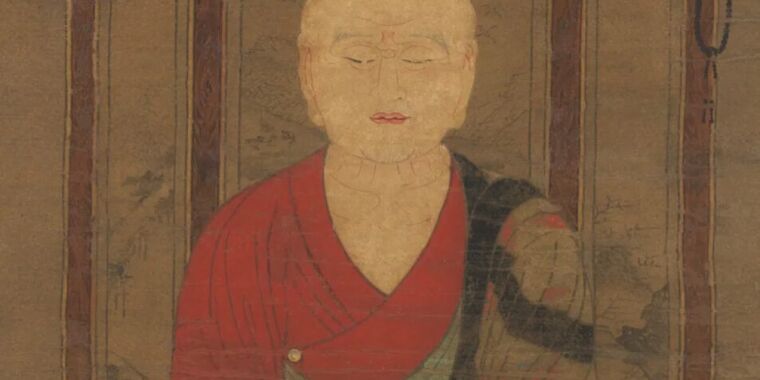
Heritage Pictures/Getty Images
The exercise of organic drugs in Japan is recognized as Kampo, and these treatment plans are frequently prescribed together with Western medicines (and included by the nationwide health and fitness treatment method). The 1st man or woman to teach regular Chinese medication in Japan was an 8th-century Buddhist monk named Jianzhen (Ganjin in Japanese), who collected some 1,200 prescriptions in a e-book: Jianshangren (Holy Priest Jianzhen)’s Solution Prescription. The text was considered missing for generations, but the authors of a modern paper published in the journal Compounds stumbled throughout a e book revealed in 2009 that contains most of Jianzhen’s original prescriptions.
“Right before the e book Jianshangren’s Solution Prescription was found, everyone assumed it had disappeared in the entire world,” Shihui Liu and his co-authors at Okayama University in Japan wrote. “Thankfully, we identified it prior to it disappeared absolutely. It has not yet been involved in the intangible cultural heritage. As we all know, intangible cultural heritage itself is incredibly fragile. Everything has a process of technology, progress, continuation, and extinction, and the stays of intangible cultural heritage are also in these types of a dynamic approach. We hope to attract far more people’s interest to defend numerous intangible cultures that are about to vanish, which includes Jianshangren’s Top secret Prescription.”
Born in what is now Yangzhou, China, Jianzhen turned a disciple of Dayun Temple at 14 decades previous, at some point getting abbot of Daming Temple. He was also recognised to have health care expertise—passed down from monks to disciples for generations—and even opened a medical center in the temple. In the slide of 742, a Japanese emissary invited Jianzhen to lecture in Japan, and the monk agreed (despite the fact that some of his disciples have been displeased). But the crossing did not do well. Nor did his up coming 3 attempts to journey to Japan.

S. Liu et al., 2022
On Jianzhen’s fifth attempt to go to Japan in 748, he made a little bit far more development, but the ship was blown off system by a storm, and he finished up on Hainan Island. The monk designed the arduous journey again to his temple by land, lecturing at monasteries together the way. It was virtually a few decades prior to he got back again, and by then, he had been blinded by an an infection. The sixth try, nevertheless, proved prosperous. Immediately after a six-thirty day period voyage, Jianzhen made it to Kyushu in December 748, reaching Nara the next spring, exactly where the monk gained a heat welcome from the emperor.
According to the authors, Jianzhen introduced numerous common elements with him to Japan, including musk, agarwood, snail, rosin, dipterocarp, fragrant gall, sucrose, benzoin, incense, and dutchman’s pipe root, as effectively as honey and sugar cane—all of which shaped the basis for some 36 unique medicines. He also managed to acquire other substances over the study course of his journey from China to Japan.
Soon after settling in at Toshodaiji Temple, the monk commenced growing medicinal herbs in a backyard garden, distributing his medications to these in need—including Emperor Shomu and Empress Komyo. Inspite of being blind, Jianzhen could even now rely on odor, flavor, and contact to establish the numerous medications. And he taught several Japanese how to collect and make those people medications, much too. In actuality, quite a few Japanese medications ended up when wrapped in paper embellished with a portrait of Jianzhen.
